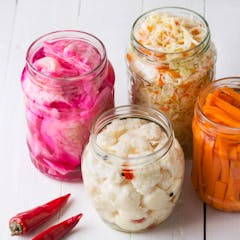
Articles on Food chemistry
Displaying all articles

In a pinch, the water from a can of beans can replace eggs. But how does that work, exactly?

Roasting meat sets off a cascade of chemical reactions. With a bit of kitchen chemistry know-how, you can use these reactions to your advantage when you make gravy.

Probiotics are great for your gut, but which sources contain the most beneficial bacteria? Newly developed sensors are helping scientists figure it out.

Nonalcoholic beer may sound like an oxymoron, but newer techniques are producing tasty, high-quality options in this growing beverage category.

Ever wonder why bakers spend so long kneading their dough? They’re trying to form a gluten network, which helps the bread rise.

Some coffee lovers can’t do without their hit of caffeine. But if you prefer decaf, here’s the intriguing science of how it’s made, why it costs more – and how much caffeine makes it to your cup.

Pantry food can go bad if exposed to oxygen, but an AI model might help develop more effective preservatives and keep food fresher for longer.

The bourbon industry has been booming in recent years, but what sets all the different types of bourbon apart?

There are two main methods used to calculate the energy content in food and drinks.

Ever wonder how soda manufacturers get the bubbles and fizz inside the can? A chemist explains some of the science behind the carbonation process. Hint − it involves carbon.

Two food scientists, an entomologist, an anthropologist, a veterinarian and a historian walk into a bar (of chocolate) and tell bitter and sweet stories of this favorite treat.

Why should you not beat your eggs in a plastic bowl? Can you save an over-beaten meringue? And is there a specific sugar you should use?

It’s totally fine to eat chocolate with a white film on the surface. But what is it, how did it get there, and how can it be avoided?

Deep-fried turkeys are delicious, but making one can be dangerous. The scientific reason for fiery Thanksgiving mishaps? A difference in the densities of ice, water and oil.





